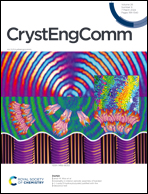Which nets are the most common? Reticular chemistry and information entropy†
Abstract
The information-entropy measures of the complexity of nets are proposed that take into consideration both the vertices and edges of nets. The parameters quantify the amount of Shannon information per element (vertex or edge) and per the translationally independent parts of the nets. The nets can be classified according to their complexity into very simple (0–20 bit per cell), simple (20–100 bit per cell), intermediate (100–500 bit per cell), complex (500–1000 bit per cell), and very complex (>1000 bit per cell). The information entropies for 1936 3D nets were calculated and analysed, showing that the simplest (information-poor) nets possess the lowest transitivities. The majority of the most common nets in metal–organic frameworks (MOFs) are the simplest nets within their respective categories (i.e. among the nets with the same coordination of vertices). Since the information is directly related to entropy, which is understood as a statistical parameter, the preference of the simplest nets in MOFs is at least in part governed by their low information contents and high configurational entropies.



 Please wait while we load your content...
Please wait while we load your content...